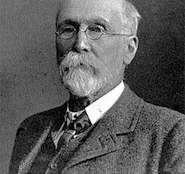MAURICE GLASMAN argues that institutional renewal of banks, corporate governance and land are vital to a new political economy for Labour.
The central insight of Blue Labour is that there was a fundamental problem with the political economy of New Labour. The assumption that globalisation required transferrable skills and not vocational speciality, that tradition and local practice were to be superseded by rationalised administration and production turned out to be mistaken. The denuding of the country and its people of their institutional and productive inheritance by the higher rates of returns found in the City of London, and then the vulnerability of those gains to speculative loss, is the story we confronted in 2008.
Social Market economy
It turns out that the German political economy, with its federal republic and subsidiarity, with its works councils and co-determination between capital and labour, with its regional and local banks and vocational control of labour market entry, a democracy locational and vocational; was much better equipped to deal with globalisation than we were with our financial services and transferrable skills. They generated value through pursuing a common good between capital and labour, which were both represented in the governance of the firm and responsible for the development of corporate strategy. They retained pre-modern artisan organisations and turned them into the foundation of their contemporary economic success. They entangled and constrained capital in a myriad form of localised arrangements and they emerged from the crash, virtually alone, with a productive economy and a functioning democracy, with greater equality than us and more meaningful work.
The German political economy retained ideas of status that we discarded in favour of flexible labour markets and yet they proved better at adapting to the change in circumstances generated by new technology and financial innovations. They asserted that globalisation was not a fate that required a single response. An Aristotelian conception of internal goods, of internal negotiation and co-operation, of a balance of interests within a corporation and not an exclusive assertion of external ownership and unilateral managerial prerogative characterised a system built upon strong self-organised democratic institutions within the economy. The comparative superiority of the social market economy and the weakness of ours requires constitutional change and civic renewal as well as specifically economic institutions, the generation of a different system. Some of the economic institutions characteristic of this system are outlined below.
Before moving to the institutional system necessary for economic renewal it is necessary to recognise another point. It it is not only that when it comes to the combination of household debt and those held by our financial institutions, we are indeed the world leader but that this comparative advantage has been building for a long time. It has attained the status of a ‘developmental pathway’ and its maintenance is supported by the two dominant interests supporting the status quo, finance capital and the State. To resist the domination of society by these two forces it is necessary to decentralise democratic power to local institutions that can resist the concentration of power and ownership that are generated by state and market based economic systems.
The story presented here is that the combination of finance capital and public administration, which have been the dominant drivers of employment and growth over the past 30 years have not generated very much value. Of the 1.3 trillion pounds lent by banks in the British economy between 1997 and 2007, 84% was in mortgages and financial services. Debt, with everything that means for people, families and businesses was the great growth area so that an economy built on invisible earnings concealed the virulent growth of an invisible grief.
Between Viagra and vivisection
Neither a Keynesian nor a free market approach, state and market based strategies, can give any account of the societal conditions of economic success and yet they remain the fundamental choice we are forced to make. We are constantly told that the only choice is between Viagra and vivisection, between a stimulus package and cuts when neither address the fundamental problem. Neither model has the conceptual means of understanding the importance of institutions, of vocation, of virtue and value in generating competitive advantage. Neither has the ability to conceptualise the importance of long term stable relationships between capital, labour and locality in generating growth and innovation, of reciprocity as the fundamental practice that should be pursued and an ethos of responsibility to yourself and others that is the fundamental condition of competitive advantage in the contemporary market economy.
Another way of putting this is that if a stimulus package is conceived tactically, as a response to immediate problems in the form of an external intervention administered generally by the state without embedding that stimulus in a strategic plan in which the creation of new institutions and work practices are constituted in order to avoid previous mistakes, then the fundamental problem of the generation of debt and the lack of generation of value will occur. That is the Viagra position, so to speak. What happens when the external stimulus wears off? If however, it is embedded in the generation of a different type of economy, based upon establishing long term stable relationships between capital and labour, in a fundamental change in the power relations within the firm and a negotiation of corporate strategy between them, then value can be generated in areas other than rationalisation and financialisation.
It is because Keynes developed a general theory, albeit of disequibrium, that an exclusively Keynesian strategy cannot effectively penetrate into the institutional mediation required for the renewal of skill, vocation and tradition within constantly transforming circumstances. Apart from the odd flashes of ambiguous insight in chapter twelve there is not much going on in Keynesian theory between the individual and the state; no theory of the firm, and what a good firm might be; no theory of the representation of the interests within the firm and the institutions required to turn information into knowledge and the practices embodied in those institutions. Counter cyclical reflation has been practiced since Athens and Rome as a means of preserving the status of citizens and society and was the primary political economy of each city state in the era of the medieval communes. It is one of the essential tools of Statecraft. In order to avoid the partnership of finance capital and the state, and build an alternative one with the energies and particularities of the people and localities of the country it is not helpful to adopt an explicitly Keynesian method. The practices of the social market economy in Germany and the theoretical framework given by Karl Polanyi in The Great Transformation are perhaps a better guide.
In the same way that Keynes did not invent counter cyclical spending on public works as a way of working through recession so it is that Lenin was not the first person to ask ‘What is to be done?’ but he seems to have established ownership rights on the question. So what are the institutions that need to be developed to enable a sustainable growth model beyond the stimulus package?
New banking institutions
The first is to establish new banking institutions in the places where people live and would like to work which can address the fundamental problem of lack of internal investment. The stranglehold of the City on our pension funds, savings and assets and the relentless recklessness of the money managers who were their custodians proved calamitous. Constraining banks to lend within specific places, to establish productive and profitable relationships with businesses that function in those places is necessary in order to break the illusory speculative thrall of higher returns on investment. ‘Best value’ intensified the pressure.
I am inspired by the excellent work of Andy Haldane at the Bank of England and he has gone furthest in probing the causes of systematic unaccountable recklessness in the banking sector. I would suggest that we use 5% of the bailout money to endow the Banks of England, which would be established in the counties and cities of England and would be constrained to lend within the county or city. The principal of the endowment would be in trust to the people of that county or city, in perpetuity so that it could not be liquidated by its members, and the balance of power in its corporate governance will be held by a third being held by the Bank of England, a third by its workforce and a third by the civic institutions of the locality. These newly constituted ‘Banks of England’ are one of the essential feature of a national economy within a global order in this system.
Without the endowment of newly constituted banks with a locational constraint the story of the Northern Counties Permanent Building Society and its tragic transformation into Northern Rock, that was the trigger of the debt into deficit story, will be repeated and generalised into a financialised economy. There are always short term rational reasons for increasing returns by easing lending constraints but the result is invariably unreasonable. The endowment of banking trusts with regional constraints on lending is a reasonable one. It avoids centralised insensitivity by making capital available within the price system.
The Co-operative Bank had a policy of ‘relational banking’ based on local relationships with business and it had a half a per-cent of the toxic debt found in the mainstream banks in 2008. The government has failed to establish these new institutions in the regional economy and, given quantitative easing and targeted stimulus packages, that is its greatest failings. It is using failed institutions as its instruments for growth and the trend is continuing. It is a telling statistic is that there are nine effective lending banks in Britain and more than two thousand in Germany.
Vocational economy
The second type of institutional change concerns the endowment of vocational institutions and the establishment of a vocational economy. The key link that needs to be made is between the national skill formation regime and the organisation of the labour market. In the professional economy it is illegal to practice without having served a long period of training and apprenticeship. Doctors, lawyers and dentists have self-organised institutions that function as interest groups and internal ethical regulators that control labour market entry. They used to be called guilds. These are areas; law, medicine and accountancy, where Britain is recognised as having preserved and strengthened a sense of good practice.
This was generalised across skill formation and labour market entry throughout all trades in Germany. A democratically organised artisan skill sector constantly renewed its skills and this worked as a constraint across the entire economy and provided the tradition within which innovation could make sense in terms of good practice. A move away from university education as the exclusive goal and towards a system that honours work by hand and brain and renews a sense of virtue within the craft enforced and sustained by organisations is one possible consequence in pursuing the pursuit of value. This would require a re-organisation, a re-orientation of higher education.
One path could be to restore the ex-polytechnics as vocational colleges, have a co-governance system within them between unions, private sector and the state. One could think of placing the medical schools and the law schools within them so that the class distinction is dissolved. Vocation and virtue are two conditions of generating value and that needs to be linked more widely to conceptions of social mobility and equality. This also requires thinking more seriously about different pathways at fourteen, as happens in Germany, a conversation that is going on at a very high level in the Compass group looking at education. It also requires an intensification of the union direction pioneered by Teach Unions in which the Union partners vocational training. The government makes no link between apprenticeship and labour market entry and their skills agenda thus lacks institutional force.
Corporate governance
This is linked to pursuing a balance of power in corporate governance. The engagement of the workforce in the development of corporate strategy is perhaps the key distinction between Germany and Britain. A third of the board should be reserved for capital, a third for the workforce and a third for users and local interests. This would enable the negotiation of a corporate strategy in which the good of the firm is owned by each of its principle stakeholders. Accountability is too important to be left to accountants, that is a fundamental lesson of the crash.
The energy, skills and commitment of the workforce is of fundamental importance to the good of any company and how that feeds into decision making and product innovation is a matter of institutional design. It involves a redistribution of power towards labour and the consequences are surprising. German workers negotiated a pay freeze in a boom in order to restructure their industry and have emerged with power and growth. I have written of this extensively in other places, with a particular added emphasis on the organisation of pension funds, so I have learnt not to labour the point. Worker representation on remuneration committees is a step in the right direction but needs to be extended into the governance of the any firm above fifty employees.
Land reform and housing
A fourth area of institutional change concerns the use of endowment and trusts to promote land reform and house building. There is ten billion pounds worth of public land being sold off by the government in parallel to the cuts. There are many reasons for thinking that this is the most fruitful area of resistance. The sale of the forests and allotments was opposed and reversed. The further reason is that taking away the freehold price halves the price of property.
In terms of community land trusts which would be endowed by the state or local authority ‘in perpetuity for the people of that place in trust for the nation’ would enable leasehold house building within a shared freehold structure. Community Land Trusts were pursued, with extraordinary results in East Brooklyn by the Industrial Areas Foundation in the building of ‘Nehemiah Homes’. Without freehold costs house building would become affordable, the local skills developed and a redistribution of land and assets, both individual and shared, to people who are dispossessed and without assets.
The Great Recession, as Wolfgang Streek calls it, is most morose in the construction sector. The endowment of the land to the people would be one form of stimulus as it would make the generation of the money necessary for build houses possible at a local level. This is not only applicable to housing but to public assets. Dover Port, for example, is owned by the Government and leased to Dover Port Authority, which is now a private company and they wish to sell it to another private authority as a freehold entity. This is part of the portfolio rationalisation made necessary by the deficit. In contrast, Dover Port could be endowed to the people of Dover as a community land trust and could be governed on the corporate model of a third funders, third workers and a third the people of Dover. Their vocational college could specialise in travel; maritime, train and motor based, and could be funded partly by the Kent County Bank and Union funds as in the restructuring of Chrysler in Detroit, thus bringing all aspects of this system together. The White Cliffs may yet again represent defiance and hope for the working people of England. As it stands the citizens of Dover are tenant farmers in their own city.
National institutions and decentralisation
The paradoxical premise of this paper has been double. The first has been the suggestion that globalisation requires a national institutional regime, the second is that this is best conceived in a decentralised form that would challenge the primacy of the Treasury in favour of regional variety and power. The form of economic renewal would be democratic and built upon the negotiation of the common good between capital, labour and locality.
The role of the State in this is central. It should set the terms of engagement both in terms of a living wage as the floor and an interest rate cap as the ceiling, so that debt can be turned into value. It sets the legal framework and is represented within it whenever it funds a project or programme. The goal of the statecraft, however, is to strengthen the institutions that promote solidarity and non-commodified forms of knowledge so that we can effectively compete in the global division of labour. I have tried to suggest what a few of those might be.


